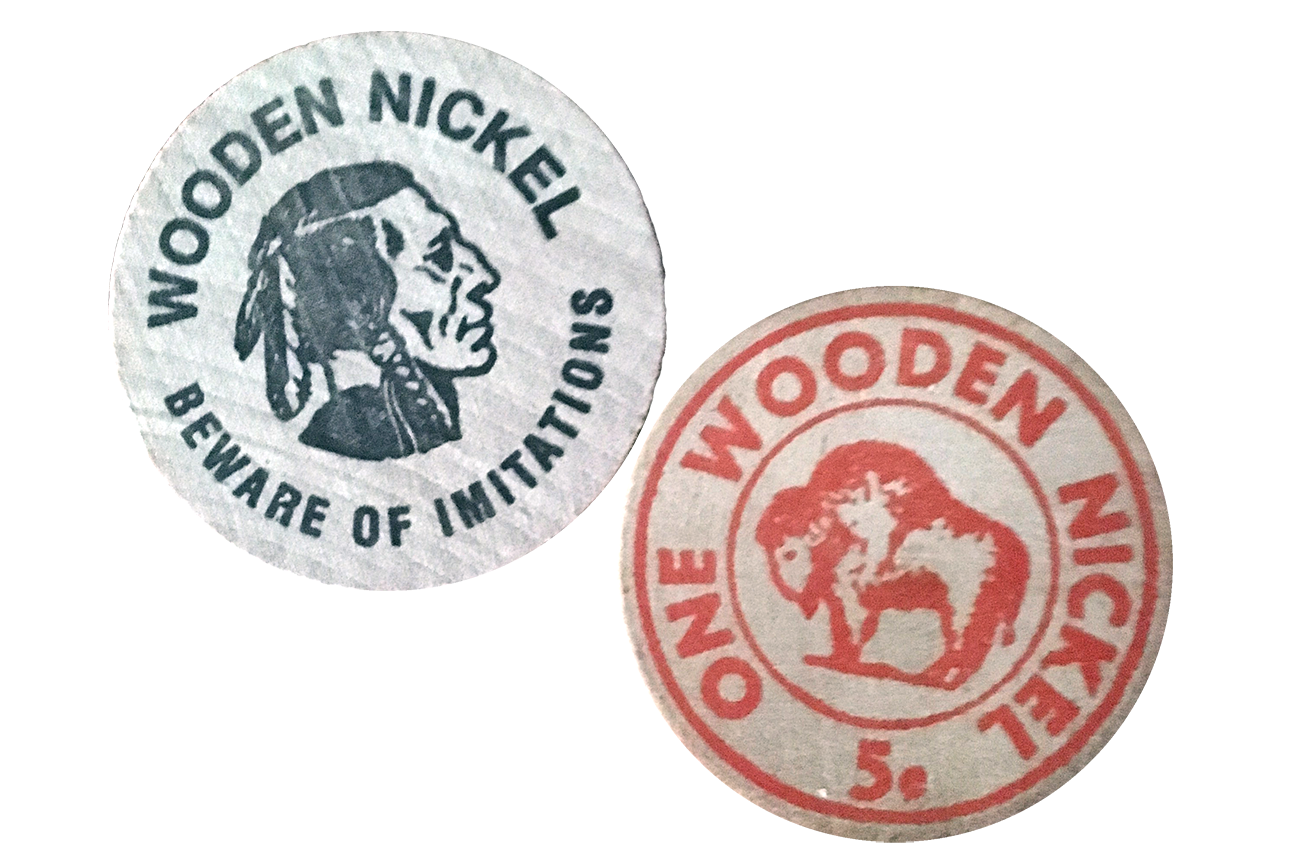Don’t take any wooden nickels- but maybe you should.
The popular phrase, “Don’t take any wooden nickels” predates the actual wooden nickel, which has never been used as true United States currency.
The adage dates to the 1900s as advice to someone to watch out or don’t let yourself be taken advantage of.
The first wooden “nickels” or tokens appeared in 1934, as an advertisement/souvenir for a fair in Birmingham, New York.
The gimmick proved popular enough that by 1948 the Elbee Company of San Antonio, Texas added custom-printed wooden nickels to their line of novelty items.
Representing the denomination of 5 cents, the nickel was first minted in 1866, and eventually replaced the precious 5-cent coin, the half dime.
The Coinage Act of 1873 ceased production of the half dime, which was the original denomination as prescribed in the Mint Act of 1792, so for seven years, there were two 5-cent coins in circulation.
The nickel is named for the percentage of nickel used to mint the coin, 25 percent in addition to 75 percent copper.
Early wooden nickels usually had either an Indian head or bison on one or both sides in homage to the “buffalo” nickel that was minted from 1913 to 1938, when the wooden nickel began gaining popularity as a novelty item.
In 1995, wooden nickel enthusiast Herb Horning purchased the wooden nickel division from the Elbee Co. and renamed it the Old Time Wooden Nickel Co.
During his lifetime, he amassed over 1.5 million collectable tokens, some of which were on display as a museum at his factory’s location.
He also created the “World’s Largest Wooden Nickel,” which is 5.5 inches thick, 13 feet, 4 inches tall and weighs 2,500 pounds, which stands outside the factory.
The family-owned business produces 6 million custom-printed or engraved wooden nickels a year that are given out at businesses or sold at attractions like the Arcadia Round Barn.



















